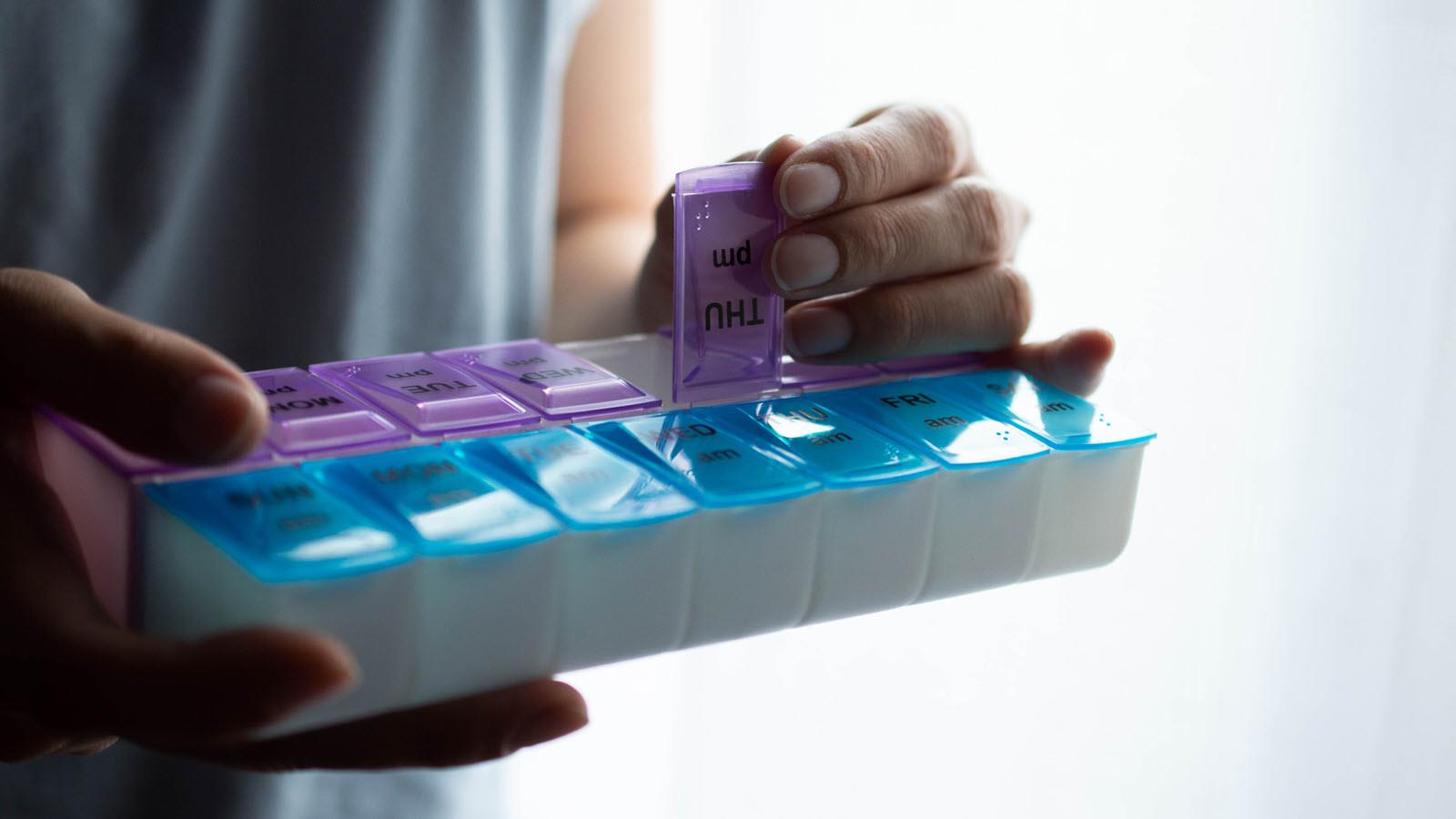When health problems are complex, patients sometimes must manage more than one prescription medicine. It can help to set up routines, reminders and systems for keeping track of medicines, making sure you don’t run out and staying on schedule with every dose.
For people who use infused medicines, organization is key because they must keep track of more than just a bottle of pills. Infused treatments also need to be kept at the right temperature and can be difficult to replace on short notice.
Primary immunodefiency patient Lynne Doebber uses gallon-size plastic bags to organize all the supplies she needs for each subcutaneous infusion, which she has been trained to do at home. In go the syringes, needles, medicine and other items needed to complete the once-weekly treatment. She labels the bags “Week 1,” “Week 2,” etc. and stores them in a special cabinet.
Doebber and the others we interviewed recommend making a list of all medications and keeping it handy both for you and anyone else who might need it in an emergency. When you’re managing multiple pills, they recommend labeled pill boxes that indicate both days of the week and time of day. Find out what else they suggest:
Dr. David Seitz, Medical Director for Ascendant Detox
Consistency is your ally when it comes to medication, said Seitz. “It’s important to develop a regular schedule,” he says, whether by setting alarms or simply making a habit of taking your prescriptions at the same time every day.
He also suggests:
Have a designated place for your medication, to ensure you don’t misplace it. If you have trouble remembering to take your medications first thing in the morning, you could try keeping them next to your toothbrush. This way, you will see them as soon as you wake up.
Consider downloading a medication tracker app on your smartphone. Some apps allow you to set reminders so that you never forget to take your medication. Some will even notify you when you need a prescription refill.
A.J. Silberman-Moffitt, Patient
As she nears 50, Silberman-Moffitt’s health regimen involves plenty of prescriptions, and she has experimented to find her ideal system for managing them. “Remember that what works for others might not work for you,” she says. “You might need to try a few strategies.”
Silberman-Moffitt suggests:
I have a pill case with “AM” and “PM” compartments. This enables me to pack my morning pills separately from my evening pills, and prevents me mixing up the two. My morning pills don’t require a reminder. I always take them when I wake up, which works for me because I wake up around the same time every morning. For afternoon medications, I have daily alarms set on my cell phone.
It might be easier to remember your medications if you take all or most of them at the same time, but you should discuss this with your doctor and pharmacist. They will be able to tell you if any of your prescriptions will interact with each other. They will also advise you if you need to take specific medications with food or on an empty stomach.
Eileen Roth, Organizing Expert
If you’re looking for tactics to incorporate in your routine, Roth literally wrote the book — “Organizing for Dummies” – on the subject. True to form, she made an Excel spreadsheet to keep track of her husband’s galaxy of medications, and to show to doctors.
She offers a few thoughts from her experience:
It’s easiest to track your medications if you use seven-day containers and take the pills at each meal. This makes it less likely you’ll miss one. You could also use a tracking sheet, but I recommend just taking them from appropriately marked containers.
I found it easiest to use separate pill containers marked “Morning,” “Evening,” and “Bed.” Buy a different color for each container, and use permanent marker to write when you need to take the pills in each one. You can buy big seven-day containers with several rows for different times of day, but these are very bulky. You may also want a smaller pocket container to carry pills for breakfast and dinner when you eat out.
If you have small children in the house, you might want to buy containers with a “lock” across the pill compartments, as opposed to one that opens more easily.



